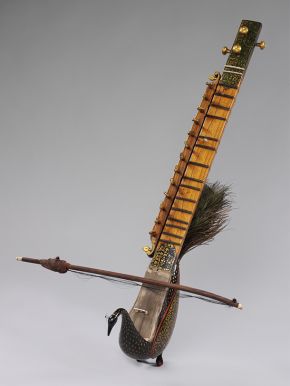Raag in Guru Granth Sahib Ji
Interested in learning about raags in Sri Guru Granth Sahib Ji? You've come to the right place!

Although there are 31 main Ragas in the Guru Granth Sahib with a total of 60 that include sub-raags. A raga is a complex
structure of musical melody used in the Indian classical music. It is a set of rules of how to build a melody which can
ignite a certain mood in the reciter and listeners.
Each raga is a chapter or section in the Guru Granth Sahib starting
with Asa raag, and all the hymns produced in Asa raag are found in this section ordered chronologically by the Guru or
other Bhagat that have written hymns in that raga.
Click the link below for the list of all sixty Raags under which Gurbani is written, in order of appearance.
The first three raags in Guru Granth Sahib Ji in order of appearance are:
Aasaa has strong emotions of inspiration and courage. This Raag gives the listener the determination and ambition to put
aside any excuses and to proceed with the necessary action to achieve the aim. It generates feelings of passion and zeal
to succeed and the energy generated from these feelings enables the listener to find the strength from within to achieve
success, even when the achievement seems difficult. The determined mood of this Raag ensures that failure is not an
option and motivates the listener to be inspired.
If there is a perfect simile for Raag Gujari, it would be that of a person isolated in the desert, who has their hands
cupped, holding water. However, it is only when the water begins to slowly seep through their joined hands that the
person comes to realise the real value and importance of the water. Similarly Raag Gujari leads the listener to realise
and become aware of passing time and in this way comes to value the precious nature of time itself. The revelation
brings the listener to an awareness and admission of their own death and mortality, making them utilize their remaining
‘life time’ more wisely.
3. Raag Gauri Deepaki (ਗਉੜੀ ਦੀਪਕੀ)
In the Guru Granth Sahib, there is one shabad (hymn) under the title Raag Gauri Deepaki. In this shabad, Sohila is a lorrie (lullaby), which is narrating a kind of bedtime story. This Raag generates feelings of warmth and security, just like a mother singing a lullaby to her child. Lullabies were traditionally used not only as a way of comforting a child, but also as a means in which mothers shared their past experiences and knowledge. Similarly this Raag enlightens the listener through knowledge and experience and brings them to the realization that to gain the truth, you must first realize that you are in darkness. This enlightened state gives the listener a feeling of certainty, fearlessness and a new hope for the future.


